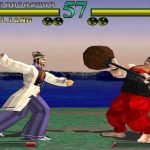
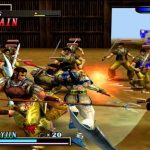
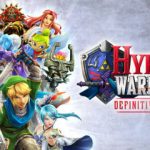


The “Musō” genre, characterized by frenetic battles against armies of enemies, has its roots in the Dynasty Warriors series and the pioneering work of Koei Tecmo’s Omega Force studio. Since 1997, these developers have not only created a unique genre, but also taken it to the top!
One of the big surprises of the last State of Play is the return of the Dynasty Warriors franchise with its new opus Origins. After working for the last 6 years on various licenses, the development studio Omega Force returns to its main saga to offer us a 10th episode!
The origins of the studio and the first title in the saga
Koei Tecmo, founded in 1978, was initially known for its strategy games such as Nobunaga’s Ambition and Romance of the Three Kingdoms. In 1996, the creation of the Omega Force development studio aimed to diversify their catalog with action games. Their first project, Dynasty Warriors, released only 1 year later in 1997, was a one-on-one fighting game, inspired by classics of the genre like Tekken. Then known as Sangoku Musou in Japan, the title was not yet what would later be called a “Musō”. It was only with its sequel that the series found its true identity by introducing massive battles where the player faces hundreds of enemies at onceThis transformation was a major innovation, defining what would become this new genre.
Dynasty Warriors 1 is a classic fighting game
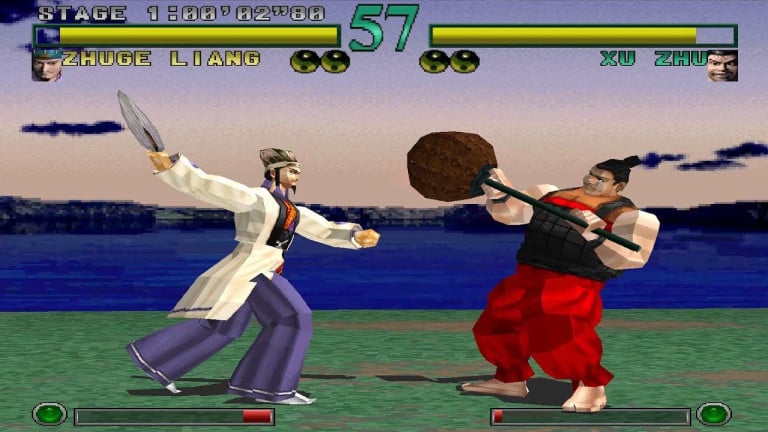
The turn towards hack and slash and the invention of the Musō genre
It was in 2000 that Dynasty Warriors 2 marked a turning point for Omega Force and Koei Tecmo. The new opus is once again inspired by the historical novel “The Three Kingdoms”, written by Luo Guanzhong in the 14th century. However, it abandons the one-on-one fights of the first opus to adopt a radically different formula. This is the beginning of the Musō style: in Japanese, it means “unparalleled” or “without equal”. In the context of video games, it refers to a hero capable of facing and defeating thousands of enemies alone, embodying unparalleled power on the battlefield.
Dynasty Warriors 2’s core mechanics are thus based on frenetic and fluid action. Players take on the role of legendary generals from the Three Kingdoms era, fighting to take control of territories and defeat enemy armies. The main mode, “Musou Mode”, allowed players to choose a character and follow their story through a series of battles. Each hero has impressive combos and devastating special attacks, allowing them to sweep away waves of opponents: a katana chain, a whirlwind with a heavy weapon… To reinforce this feeling of invincibility, players could chain kills and see the KO counter increase quickly.
Dynasty Warriors 2 Changes Its Gameplay and Becomes a Musō

Dynasty Warriors 2 was praised for its addictive gameplay and sense of spectacle. The game’s feeling of invincibility, combined with an attractive art direction for the time and a dynamic soundtrack, won over many players.. Critics also appreciated the ease of handling and the historical dimension offered. However, the copy wasn’t perfect either. The repetitiveness of missions and the lack of diversity in objectives were singled out. Additionally, graphics and fluidity could suffer when there was too much action on screen, with noticeable framerate drops.Despite these criticisms, Dynasty Warriors 2 laid the foundation for a genre that would continue to improve over the years. This is what would happen with its sequels Dynasty Warriors 3 (2001) and Dynasty Warriors 4 (2003), which improved on these mechanics by adding new modes, varied weapons, and graphical adjustments.
Between 2001 and 2011, Koei Tecmo and its Omega Force studio continued to expand their game catalog. In 2004, they launched a new series called Samurai Warriors, which transposes the concept of Dynasty Warriors’ epic battles to feudal Japan. In 2007, they created Warriors Orochi, a crossover game bringing together characters from both licenses in a common adventure.. During this decade, they released several sequels and spin-offs without ever changing their formula, cementing their reputation in the genre of massive action games where players face hundreds of enemies on large battlefields.
Omega Force establishes itself as THE Musō studio
With the series One Piece: Pirate Warriors, Omega Force has expanded its influence by diversifying with a new license. Namco Bandai President Shin Unozawa revealed that the game had 500,000 pre-orders before its release. Launched on March 1, 2012 in Japan, the game was a great success in its first week, accumulating more than 655,000 sales! Then unveiled in the West in September of the same year, the title had shipped more than 1.2 million units worldwide.
This series based on the famous manga integrated Musō gameplay into a rich and colorful universe. Fans particularly appreciated the fidelity to the characters and plots of the manga, not to mention the large-scale battles. Eiichiro Oda, author of One Piece, was himself very impressed by the quality of the hero models when he first saw the demo video. The popularity of One Piece also allowed the series to gain visibility, attracting a large audience and solidifying Omega Force’s reputation.
However, the studio’s real breakthrough came with its collaboration with Nintendo for Hyrule Warriors (2014). In fact, Kit & Krysta Podcasttwo former Nintendo employees, revealed in a video that the decision to develop Hyrule Warriors was not without hesitation. Initially, there was great uncertainty at Nintendo of America regarding the quality of the game and its fit with the Zelda franchise. The American teams even considered not distributing it outside of Japan, fearing that it would not live up to the standards of the series!
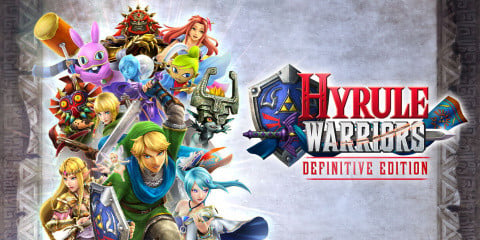

Kit, an avid fan of Dynasty Warriors, pointed out that the Musō genre has a very developed fan base in the West. Restricting Hyrule Warriors to the Japanese market would have been a “missed opportunity” for the Japanese firm. Both presenters also noted how ironic this thought seems in retrospect, given the excellent sales of the first game on Wii U that led to ports on Nintendo 3DS and Nintendo Switch. In North America, the game sold 190,000 units in its opening weekend, far exceeding Koei Tecmo’s expectations. This success abroad allowed the game to cross the million-unit mark in January 2015. The game’s success was such that a sequel, Hyrule Warriors: Age of Calamity, was released (2020), serving as a prequel to Breath of the Wild and symbolizing the renewed confidence in this spin-off series.
In fact, the success of Hyrule Warriors has opened many doors for Omega Force, allowing them to work on various other prestigious projects. Among them, two new collaborations with Nintendo: Fire Emblem Warriors and Fire Emblem Warriors: Three Hopes. But we also find Dragon Quest Heroes, Persona 5 Strikers and soon Fairy Tail. These opportunities were possible thanks to the confidence of Nintendo, which dared to entrust its precious Zelda license to external developersan approach that had not been attempted since the episodes Oracle of Seasons and Oracle of Ages developed by Flagship, and The Minish Cap by Capcom. Moreover, Koei Tecmo and Omega Force are the only developers to offer Musō type games on the market, an exclusivity which gives them expertise in this unique genre.
The Dynasty Warriors saga is back in force
Dynasty Warriors 9, released in 2018, attempted to renew the series by introducing an open world, a first for the franchise. Despite respectable sales, this episode did less well than the 430,000 copies of Dynasty Warriors 6 in 2010 worldwide. Following this title, Omega Force took a break from the main series to focus on other successful collaborations with other companies. Thus, Dynasty Warriors Origins marks the long-awaited return of the series after six years of absence! Unveiled during State of Play in June 2024, this game will be the first in the franchise to be developed for the new generation of consoles (PS5, Xbox Series) and PC. It is also in a press release that Tomohiko Sho, producer at Omega Force, expressed his vision for Dynasty Warriors Origins:
Dynasty Warriors: Origins is being developed by the incredible team at Omega Force, a team confident in a fresh start with this game. We’re here to prove with Origins that we’re not just returning to our hack and slash roots with the kind of action our fans love, but redefining their expectations! I am confident that we will deliver an unparalleled experience in this game, carving out a new story for both Dynasty Warriors and Omega Force!
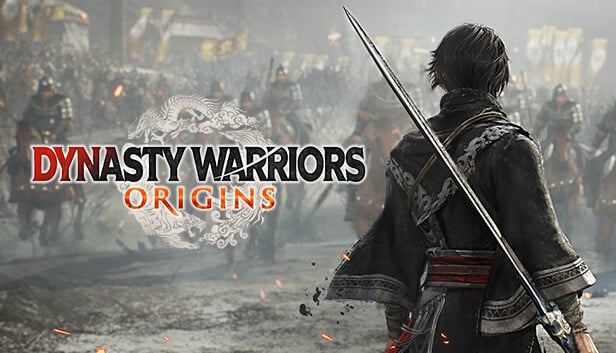
Sho stressed the importance of returning to the series’ fundamentals, based on the “sense of realism on the battlefield” and “the exhilaration of 1 vs. 1000 battles.” He promised that Dynasty Warriors: Origins would amplify that feeling of tension and satisfaction, thanks to the power of the PS5 and other next-gen consoles. Players will face massive armies in sprawling battlefields, requiring not only brute force, but also strategy and coordination with allies. Additionally, for the first time in the franchise’s history, the game will feature an “unnamed hero”, providing a unique perspective on the chaos of the Three Kingdoms.

Author Bio
A connoisseur of the digital marketplace and a master of the written word, this 30-year-old English expert brings to the table a wealth of knowledge rooted in the sale of digital products and a passion for blogging that resonates with an audience seeking expertise and insight in the online realm.
Their insights are drawn from hands-on experience navigating the intricacies of e-commerce and content creation—leading the forefront of digital innovation and communication. Whether it’s breaking down complex marketing strategies or sharing tips on how to captivate an online audience, their work stands as a testament to a career built upon successful digital engagement and savvy business acumen.
Stay tuned to absorb compelling content from a voice that not only understands the digital landscape but also shapes its future through every blog post and digital strategy.
